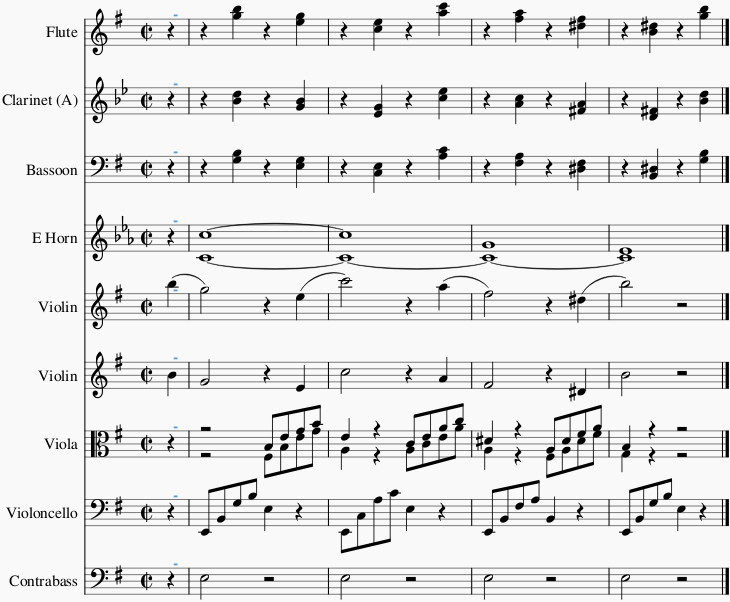 The Blogging A-to-Z challenge entry today starts with a joke: what is the definition of a minor second? Two oboes playing in unison.
The Blogging A-to-Z challenge entry today starts with a joke: what is the definition of a minor second? Two oboes playing in unison.
Sorry, oboes.
We already know what unison means: it's two voices sounding the same note. And earlier I mentioned that different instruments use different clefs. And we've covered key signatures. Now I'm going to tell you a dirt secret of the orchestra: unison sometimes looks like a bunch of completely different notes.
The problem comes from the way that certain brass and woodwind instruments work. Different instruments naturally play in different tunings. For example, if you play a natural scale on a French horn, you're actually playing (usually) an F or Bb scale. So we say that the horn is "in F" or "in B flat." Which leads to the part that string players and singers struggle to understand: music for the French horn is written as if C is F. Or Bb. In other words, horns fall into the class of transposing instruments, because they naturally transpose the notes written on the page.
To illustrate, here is how we write an F major scale played in unison—exactly the same notes—between a viola and a French horn in F:

The viola starts on F, but the horn starts on C. Except that the horn's written C is actually sounds like F.
It gets even crazier when you combine a bunch of instruments that transpose in different keys. Here's the opening of Brahms's Symphony #4 in e minor:

The flute, bassoon, and strings are in C, so when they play the note written as C they actually play a C. The clarinets are in A, so when they play what's written as C out comes an A. The key signature has to change, too; theirs is in C minor, because when they see a C the sound they make is actually E. Opposite issue for the French horns, which Brahms wanted in E: when they play the note written as C (as they do for four bars), they're actually playing G, which is also why their staff is in A minor.
It's all finally coming together, isn't it?